The Phoenix Rasbora, scientifically known as Boraras merah, is a captivating nano fish that has gained popularity among aquarists for its vibrant colors and peaceful demeanor. This small fish, which typically grows to about 20 mm (approximately 0.8 inches), is native to the slow-moving waters of Southeast Asia, particularly in Indonesia and Malaysia. Its striking appearance and gentle nature make it an ideal choice for community aquariums, especially those housing shrimp and other small fish.
In contrast, the Chili Rasbora, or Boraras brigittae, is another beloved nano fish that shares a similar habitat and care requirements with the Phoenix Rasbora. While both species are visually appealing and thrive in well-planted tanks, they exhibit distinct differences in behavior, size, and dietary needs. Understanding these differences can help aquarists make informed decisions when selecting fish for their aquariums.
This article delves into the characteristics, care requirements, and comparisons between the Phoenix Rasbora and the Chili Rasbora. By exploring these aspects, readers will gain a comprehensive understanding of these two fascinating fish species, enabling them to create a thriving aquatic environment.
Characteristics of the Phoenix Rasbora
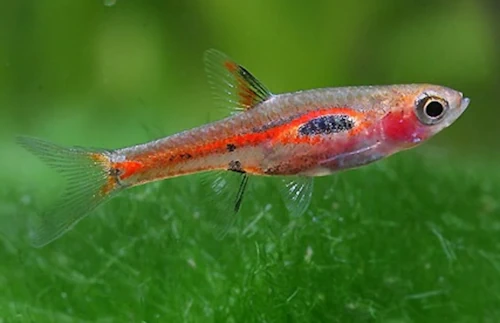
The Phoenix Rasbora is known for its vibrant red body, which is often adorned with delicate black markings. This coloration is particularly pronounced in males, especially during the breeding season when they display more vivid hues. The fish’s peaceful temperament makes it a great addition to community tanks, where it can coexist harmoniously with other non-aggressive species.
Habitat and Natural Environment
In the wild, Phoenix Rasboras inhabit blackwater streams and rivers, characterized by slow water flow and high levels of organic material. The water in these habitats is typically stained brown due to tannins released from decomposing leaves and plants. This environment provides the fish with ample hiding spots and shelter, which are crucial for their well-being.
Care Requirements
To keep Phoenix Rasboras healthy, aquarists should replicate their natural habitat as closely as possible. Here are some key care requirements:
- Tank Size: A minimum of 10 gallons is recommended for a small school of Phoenix Rasboras.
- Water Parameters: They thrive in slightly acidic to neutral water with a pH range of 6.0 to 7.0. The temperature should be maintained between 20°C to 28°C (68°F to 82°F).
- Filtration: A gentle filtration system is ideal, as strong currents can stress these small fish.
- Substrate and Decor: A soft substrate, such as fine gravel or sand, along with plenty of plants, driftwood, and leaf litter, will create a comfortable environment.
- Diet: Phoenix Rasboras are micropredators, meaning they primarily feed on small invertebrates and insects in the wild. In captivity, they accept high-quality flake food, frozen foods, and live foods like brine shrimp and daphnia.
Characteristics of the Chili Rasbora
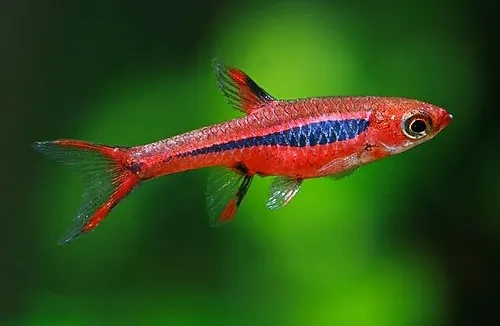
The Chili Rasbora is slightly smaller than its Phoenix counterpart, reaching a maximum size of about 18 mm (approximately 0.7 inches). This fish is known for its bright red coloration, often highlighted by a striking black spot near its dorsal fin. While both species share similar habitats, the Chili Rasbora tends to be more colorful and vibrant.
Habitat and Natural Environment
Chili Rasboras are also found in the blackwater streams of Southeast Asia, particularly in Borneo. Like the Phoenix Rasbora, they prefer slow-moving waters rich in organic material. The presence of dense vegetation in their natural habitat provides essential cover and foraging opportunities.
Care Requirements
Caring for Chili Rasboras involves similar principles as those for Phoenix Rasboras. Here are the essential care requirements:
- Tank Size: A minimum of 10 gallons is also suitable for a small group of Chili Rasboras.
- Water Parameters: They thrive in slightly acidic water with a pH range of 6.0 to 7.0, and temperatures between 20°C to 28°C (68°F to 82°F) are ideal.
- Filtration: A gentle filtration system is recommended to avoid strong currents.
- Substrate and Decor: A soft substrate with plenty of plants, driftwood, and leaf litter will create a comfortable environment.
- Diet: Chili Rasboras are omnivores and will accept a variety of foods, including high-quality flake food, frozen foods, and small live foods.
Comparing Phoenix Rasbora and Chili Rasbora
While both the Phoenix Rasbora and Chili Rasbora share many similarities, they also have distinct differences that aquarists should consider when choosing which species to keep.
Size and Appearance
- Phoenix Rasbora: Grows up to 20 mm (0.8 inches) with a vibrant red body and black markings.
- Chili Rasbora: Slightly smaller, reaching up to 18 mm (0.7 inches), with a bright red body and a prominent black spot.
Behavior
- Phoenix Rasbora: Known for its peaceful nature, making it suitable for community tanks.
- Chili Rasbora: While generally peaceful, they can be slightly more aggressive towards smaller fish, especially during breeding.
Lifespan
- Phoenix Rasbora: Typically lives for about 5 to 7 years in captivity.
- Chili Rasbora: Has a shorter lifespan, averaging around 3 to 5 years.
Diet
- Phoenix Rasbora: Primarily a micropredator, requiring a diet rich in protein.
- Chili Rasbora: An omnivore that benefits from a varied diet, including both protein and vegetable matter.
Best Tank Mates for Phoenix Rasbora in a Community Aquarium
The Phoenix Rasbora is a popular choice for community aquariums due to its vibrant colors and peaceful nature. When setting up a community tank, selecting compatible tank mates is crucial to ensure a harmonious environment. Here’s a detailed look at the best tank mates for Phoenix Rasbora, considering their size, temperament, and habitat needs.
Ideal Tank Mates
- Other Small Rasboras:
- Chili Rasbora (Boraras brigittae): This species is a great companion for Phoenix Rasboras. Both thrive in similar water conditions and enjoy similar habitats. Their small size and peaceful nature make them ideal tank mates.
- Ember Tetra (Hyphessobrycon amandae): Another small fish that shares similar water requirements. Ember Tetras are known for their vibrant orange color and peaceful demeanor, making them a perfect match.
- Tetras:
- Neon Tetra (Paracheirodon innesi): Neon Tetras are small, colorful, and peaceful. They prefer similar water conditions and can coexist well with Phoenix Rasboras in a community tank.
- Black Neon Tetra (Hyphessobrycon herbertaxelrodi): These tetras are slightly larger but still small enough to be compatible. Their peaceful nature and schooling behavior complement the Phoenix Rasbora well.
- Corydoras Catfish:
- Dwarf Corydoras (Corydoras pygmaeus): These small catfish are excellent bottom dwellers that help keep the tank clean. They are peaceful and can thrive in the same water conditions as Phoenix Rasboras.
- Panda Corydoras (Corydoras panda): Slightly larger than dwarf varieties, Panda Corydoras are still small enough to be compatible. They are social fish that enjoy being in groups.
- Shrimp:
- Cherry Shrimp (Neocaridina davidi): These colorful shrimp are peaceful and can coexist with Phoenix Rasboras. They help keep the tank clean by eating algae and leftover food.
- Amano Shrimp (Caridina multidentata): Known for their algae-eating abilities, Amano Shrimp are larger than Cherry Shrimp but still make good tank mates due to their peaceful nature.
- Other Small Peaceful Fish:
- Endler’s Livebearer (Poecilia wingei): These small, colorful fish are peaceful and can thrive in similar water conditions. They add a splash of color to the tank without being aggressive.
- Sparkling Gourami (Trichopsis pumila): This small gourami is peaceful and can coexist well with Phoenix Rasboras. They prefer slightly acidic water, making them compatible.
Considerations for Tank Mates
When selecting tank mates for Phoenix Rasbora, consider the following:
- Size: Choose fish that are small and non-aggressive. Larger or more aggressive fish can stress the Phoenix Rasbora and may even prey on them.
- Temperament: Ensure that all tank mates are peaceful. Avoid aggressive species that may bully or harm the Phoenix Rasbora.
- Schooling Behavior: Phoenix Rasboras are schooling fish and feel more secure in groups. It’s best to keep them in schools of at least six individuals. Ensure that other species also prefer to be in groups.
- Water Conditions: All fish should thrive in similar water parameters. Phoenix Rasboras prefer slightly acidic water with a pH of 6.0 to 7.0 and a temperature range of 20°C to 28°C (68°F to 82°F).
Creating a community aquarium with Phoenix Rasbora can be a rewarding experience. By selecting compatible tank mates such as other small rasboras, tetras, Corydoras catfish, and peaceful shrimp, you can ensure a harmonious environment. Always monitor the interactions between species to maintain a peaceful community tank. With the right combinations, your aquarium can flourish, showcasing the beauty of these vibrant fish.
Conclusion
Both the Phoenix Rasbora and Chili Rasbora are excellent choices for aquarists looking to add vibrant, small fish to their tanks. Their peaceful nature and compatibility with other species make them ideal for community aquariums. By understanding their specific care requirements and differences, aquarists can create a thriving environment that supports the health and well-being of these beautiful fish. Whether you choose the striking Phoenix Rasbora or the colorful Chili Rasbora, both species will undoubtedly enhance the beauty of your aquarium.

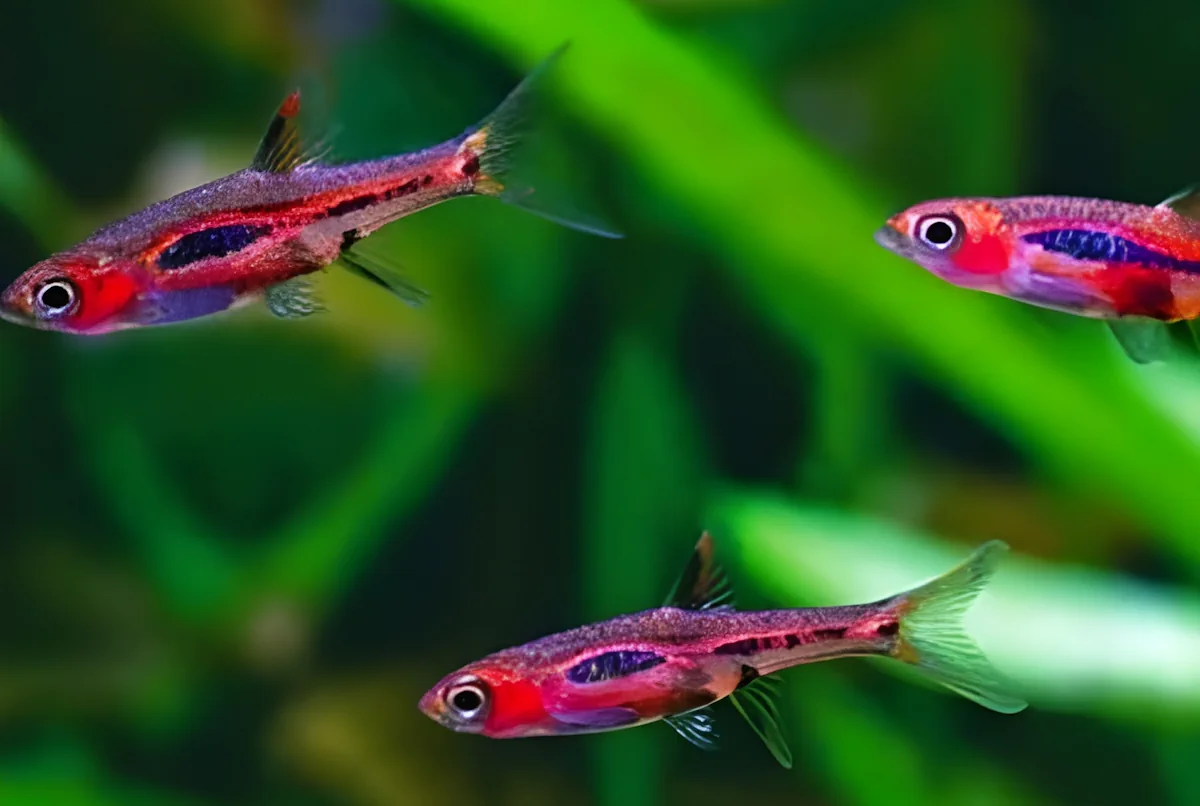
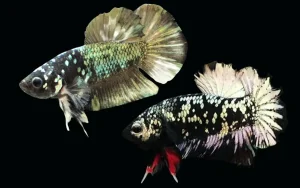
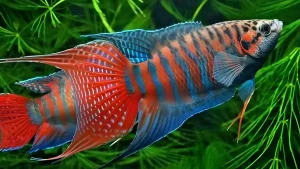
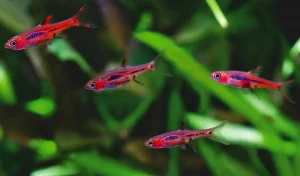
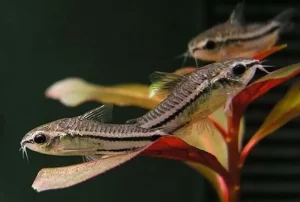



Leave a Comment